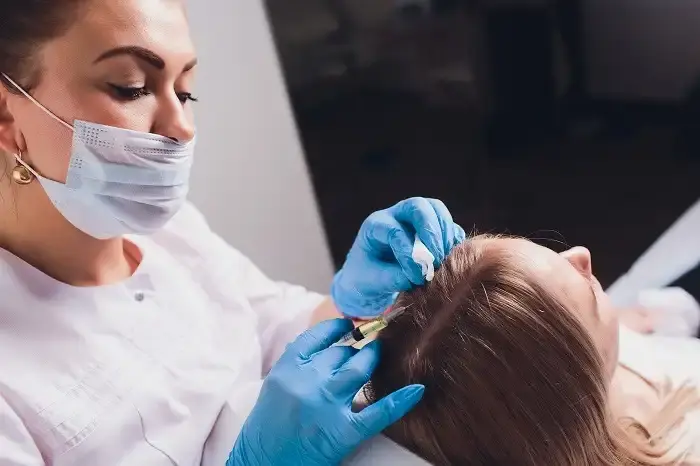A hair transplant is a surgical procedure designed to restore hair to areas of the scalp that are bald or thinning. Following the procedure, many patients are eager to resume their regular activities, particularly exercise. However, knowing when it is safe to return to physical activity is crucial for ensuring optimal results and avoiding complications. This article provides a comprehensive guide on when and how to safely resume exercise after a hair transplant.
Understanding the Hair Transplant Procedure
Before diving into post-operative care and exercise timelines, it’s essential to understand how a hair transplant works. The two primary methods used are Follicular Unit Extraction (FUE) and Follicular Unit Transplantation (FUT).
FUE involves extracting individual hair follicles from a donor area and implanting them into the balding area.
FUT involves removing a strip of scalp from the donor area, from which follicles are harvested and transplanted.
Both techniques require careful handling of the hair follicles to ensure their survival and proper integration into the scalp. The recovery process is critical for the health of these follicles, as well as for the overall healing of the scalp.
The Initial Recovery Phase
After a hair transplant, patients typically experience some swelling, redness, and tenderness in the scalp. The first few days post-surgery are crucial for recovery. During this initial period, the following guidelines should be observed:
Rest: Allow your body to heal by getting plenty of rest.
Avoid Physical Activity: It is vital to refrain from any strenuous activity, including exercise, for at least 48-72 hours post-surgery.
Follow Doctor’s Instructions: Adhere to the specific post-operative care instructions provided by your surgeon, which may include medications and scalp care.
During the first few days, the transplanted hair follicles are vulnerable. Engaging in physical activity too soon can lead to complications such as increased swelling, bleeding, and dislodging of the grafts.
Resuming Light Activity
Days 3 to 7 Post-Transplant
After the initial recovery phase, most patients can gradually start to resume light activities. Here’s what you need to know:
Light Walking: Gentle walking can typically be resumed 3 to 7 days after surgery. Walking promotes blood circulation, which is beneficial for healing. However, avoid vigorous walking or hiking that may elevate your heart rate significantly.
Avoid Sweating: During this phase, it is important to avoid activities that cause sweating, as moisture can irritate the scalp and affect the healing process.
Important Considerations
While light activities can be resumed, patients should monitor their bodies closely. If you experience any pain, increased swelling, or unusual bleeding, stop the activity immediately and consult your doctor.
Returning to Moderate Exercise
Weeks 1 to 2 Post-Transplant
After the first week, many patients can begin to reintroduce moderate exercise routines, but caution is still essential:
Low-Intensity Workouts: Activities such as cycling on a stationary bike, gentle yoga, or light stretching can often be incorporated during this time. Focus on exercises that do not involve heavy lifting or intense cardiovascular activity.
Avoid Impact Sports: Steer clear of any activities that may put pressure on the scalp or involve potential impact, such as running, basketball, or contact sports.
Post-Exercise Care
After exercising, it’s important to wash your scalp gently and avoid any strenuous scrubbing or use of harsh shampoos. This helps in maintaining the cleanliness of the area and supporting the healing process.
Full Exercise Resumption
Weeks 3 to 4 Post-Transplant
By the third week, many patients find that they can resume their regular exercise routines, but this can vary based on individual recovery rates:
Gradual Increase: Gradually increase the intensity of your workouts. Light jogging and more vigorous yoga can often be resumed, but listen to your body and ease into it.
Hydration and Nutrition: Ensure that you are well-hydrated and consuming a balanced diet rich in vitamins and minerals to support hair growth and overall recovery.
Signs That It’s Time to Intensify Your Workouts
If you notice the following signs, it may be time to resume more intense exercise:
- Reduced swelling and tenderness
- Scabs starting to fall off naturally
- Overall feeling of wellness and energy
Listening to Your Body
Regardless of timelines, it is essential to listen to your body throughout the recovery process. If you experience discomfort, pain, or any signs of complications, take a step back and consult your healthcare provider.
Long-Term Considerations
Continued Care for Transplanted Hair
Once you have resumed your regular exercise routine, continue to care for your scalp and hair:
Sun Protection: Protect your scalp from direct sunlight, especially if you are exercising outdoors. Use a hat or a sunscreen recommended by your doctor.
Gentle Hair Care: Be gentle when washing and styling your hair, especially in the initial months after the procedure. Avoid harsh chemicals and heat styling tools.
Monitoring Hair Growth
Typically, patients start to notice hair growth within three to four months post-transplant, with fuller results appearing after six months to a year. Regular follow-ups with your surgeon will help track progress and address any concerns.
Conclusion
Resuming exercise after a hair transplant is a crucial aspect of the recovery process that requires careful consideration and adherence to guidelines. By following your surgeon’s recommendations and listening to your body, you can safely return to your fitness routine while promoting healthy hair growth. Always prioritize your recovery, as this will ultimately contribute to the success of your hair transplant and your overall well-being. If in doubt, don’t hesitate to reach out to your healthcare provider for personalized advice tailored to your unique situation.
You Might Be Interested In:

